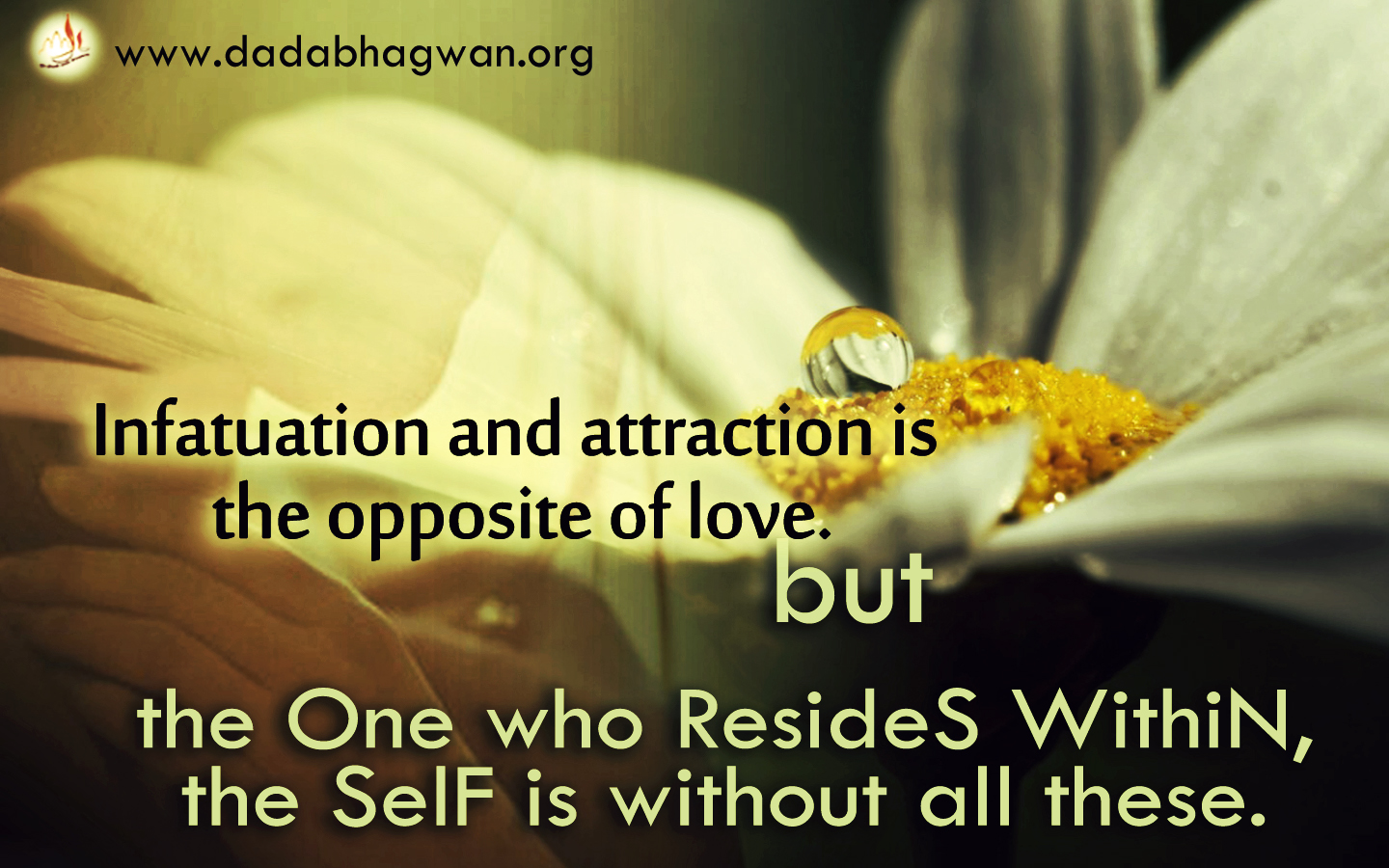Practising non-attachment is essential to experience inner peace and contentment. When we are dependent on external factors such as relationships, jobs, finances, material delights etc. for our sense of well-being, for our personal happiness and pleasure, we will naturally develop a strong attachment towards them. Consequently, we begin to want things to turn out in a particular way only. Thus, attachment leads to expectations. And when these expectations are not met, one is disappointed. Hence, he reacts by getting angry, feeling annoyed, etc. These emotions disturb the inner peace, and over time destroy the peace completely.
Do you know the fundamental reasons why attachment occurs? And what should we do to prevent this from happening, so that we can experience inner peace?
Attachment (raag) is a seed for abhorrence (dwesh), and abhorrence is a seed for attachment.

- The likes and dislikes that one has or experiences, are in reality the opinions carried forward from one’s past life. For example, one enjoyed a sweet dish, so he will opine, ‘this sweet dish is very good’; while another may have not liked it, so he may not opine, ‘oh! This is awful’. By giving opinions about anything, attachment or abhorrence arises. And this is precisely why worldly life perpetuates. But if we learn to like the dislikes too, then our opinions shall soon begin to normalize.
- Likes and dislikes are actually karmic accounts. If you have bound merit karma in the past, then you will come across things that you like and if you have bound demerit karma, then you will come across things that you dislike. To endure that which you dislike with a clear mind, means you have achieved the state of equanimity, which leads to inner peace.
- To reduce our attachment, we should analyse what all we expect from a person, and then convince ourselves to slowly get out of all those expectations, one after another, with understanding, without disturbing the inner peace.
- Attachment ultimately leads to abhorrence. We should have such an understanding that whatever we get from the other person, be it love or anger or hatred, we accept it with equanimity, devoid of love or loathing. This will gradually change our habit of reacting with attachment or abhorrence to one that is non-reactive and equanimous.
- Why is equanimity important in favourable situations as well? Why can’t we react with happiness there? Material pleasures derived from the five senses, love and respect we receive from others, people obeying our orders and doing exactly how we want, an authoritative controlling power and command over people and things – all of these are circumstances with which our ego feels very pleased. It enjoys tremendous happiness there, and therefore gets deeply attached to these favourable circumstances. One is not aware that this is the very reason why, when circumstances change, the ego is not able to bear. It crashes and when grounded, shatters in pieces. However, if we remain in a state of equanimity, no matter what the circumstance is, we will always experience inner peace. Moreover, there doesn’t arise any reason for others to cause us hurt or for us to cause hurt to others.
- Anger, pride, deceit and greed are the key sources of misery. These are born out of attachment and abhorrence which causes inner suffering and suffocation only. These emotions have hounded us through infinite births and rebirths. If we learn to dissolve them by right understanding, then we will be free of them forever.
Hence, by practising non-attachment, we will experience inner peace naturally.
The easiest way to practice non-attachment is ‘Attain Self-Realization. When you know really, ‘who am I’, you realize that the effects of happiness or unhappiness, like or dislike are ‘not mine.’ Hence, new attachment or abhorrence is not created; and consequently new karmic causes will not be created. As the old bondages continue to diminish with every passing day, you shall soon become totally free of all bondages of attachment, one day, and will experience constant inner bliss forever then.

